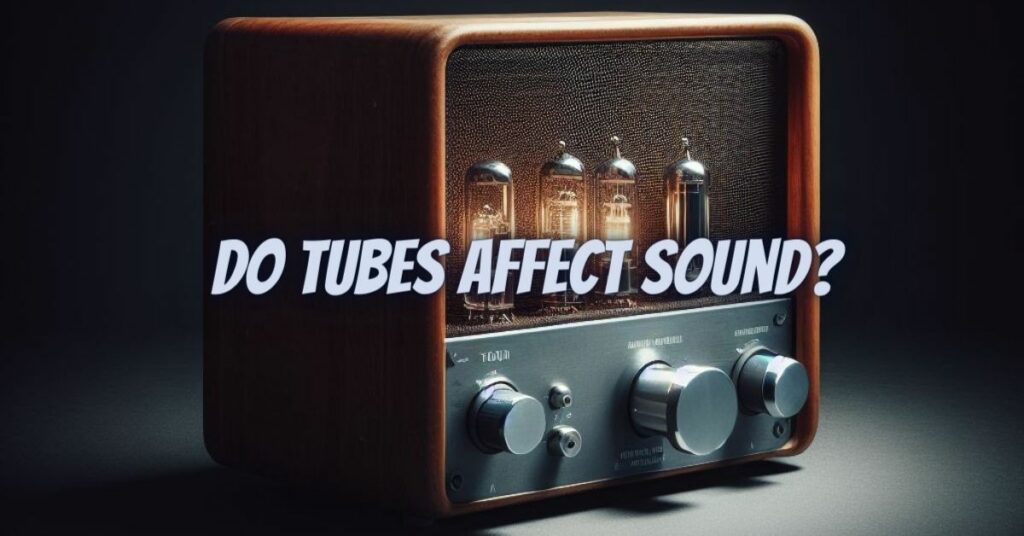Yes, tubes do affect sound. In fact, tube amplifiers are known for their warm and rich sound, which is due to the way that tubes amplify the signal.
How tubes amplify the signal
Tubes amplify the signal using a process called thermionic emission. Thermionic emission is the process by which electrons are emitted from a heated metal surface. In a tube amplifier, the metal surface is a filament, which is heated by an electric current. The electrons emitted from the filament are attracted to a positively charged plate, called the anode.
The signal from the instrument or microphone is applied to a grid, which is located between the filament and the anode. The grid controls the flow of electrons from the filament to the anode. When the grid is positively charged, it attracts electrons from the filament, which increases the flow of electrons to the anode. When the grid is negatively charged, it repels electrons from the filament, which decreases the flow of electrons to the anode.
The signal from the instrument or microphone is amplified by the tube because it controls the flow of electrons from the filament to the anode. The more positive the grid is, the more electrons will flow to the anode, and the greater the amplification will be.
How tubes affect the sound
Tubes affect the sound in a number of ways. First, tubes produce a type of distortion called even-order harmonic distortion. Even-order harmonic distortion is generally considered to be more pleasing to the ear than odd-order harmonic distortion, which is produced by solid-state amplifiers. Even-order harmonic distortion adds richness and warmth to the sound. It also helps to make the sound more complex and interesting.
Second, tubes have a relatively slow response time compared to solid-state amplifiers. This means that they do not respond to changes in the input signal as quickly. This can give the sound a more compressed and saturated feel.
Third, tubes have a limited dynamic range compared to transistors. This means that they cannot amplify a very wide range of signal levels without clipping. This can also contribute to the compressed and saturated sound of tube amps.
Overall, tubes have a number of characteristics that affect the sound in a positive way. They produce even-order harmonic distortion, which adds richness and warmth to the sound. They also have a slow response time and limited dynamic range, which can give the sound a more compressed and saturated feel.
In addition, tube amps are known for their responsiveness to the way that you play your instrument. Tube amps are more likely to reproduce the subtle nuances of your playing, such as the way you pick the strings or the way you move your fingers on the fretboard.
However, it is important to note that not all tube amps sound the same. The sound of a tube amp is affected by a number of factors, including the type of tubes used, the preamp circuit, the power amp circuit, and the output transformer.
If you are looking for an amplifier with a warm and rich sound, a tube amp is a good option. However, it is important to note that tube amps are more expensive than solid-state amps, and they require regular maintenance. Tube amps are also heavier and bulkier than solid-state amps.
Ultimately, the best way to decide whether or not a tube amp is right for you is to try one out and see if you like the sound. There are many different brands and models of tube amps available, so you should be able to find one that fits your budget and your needs.


